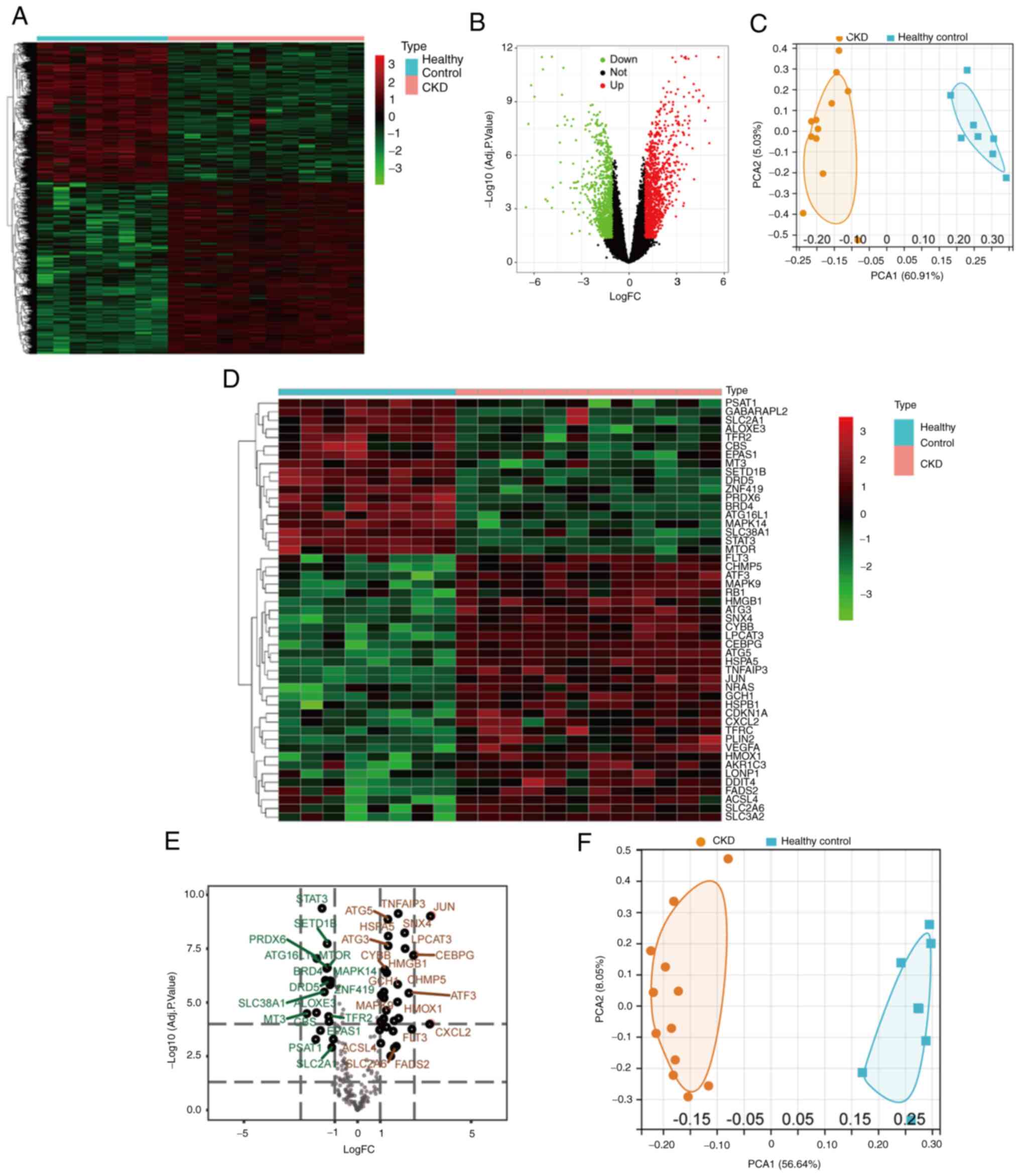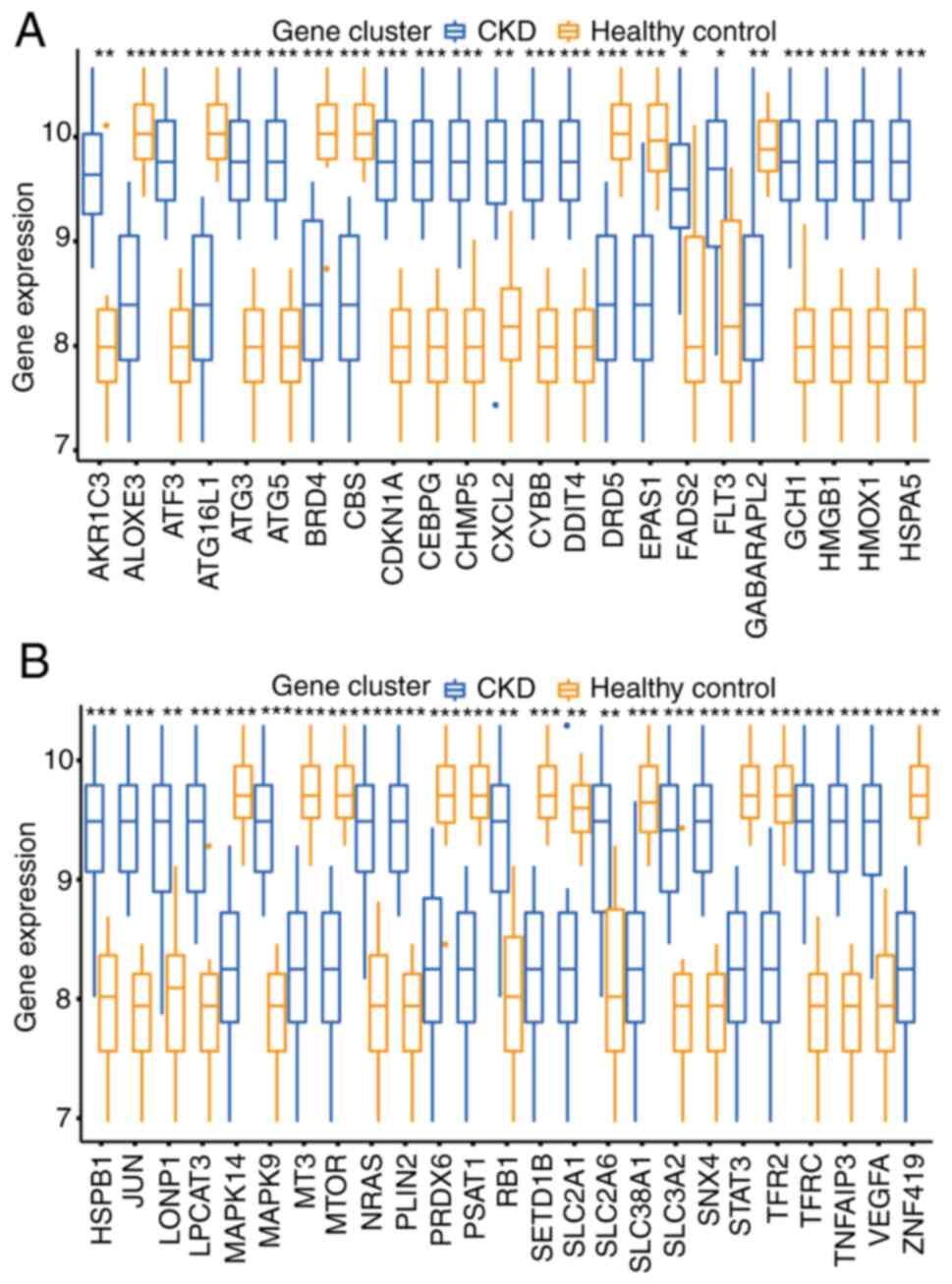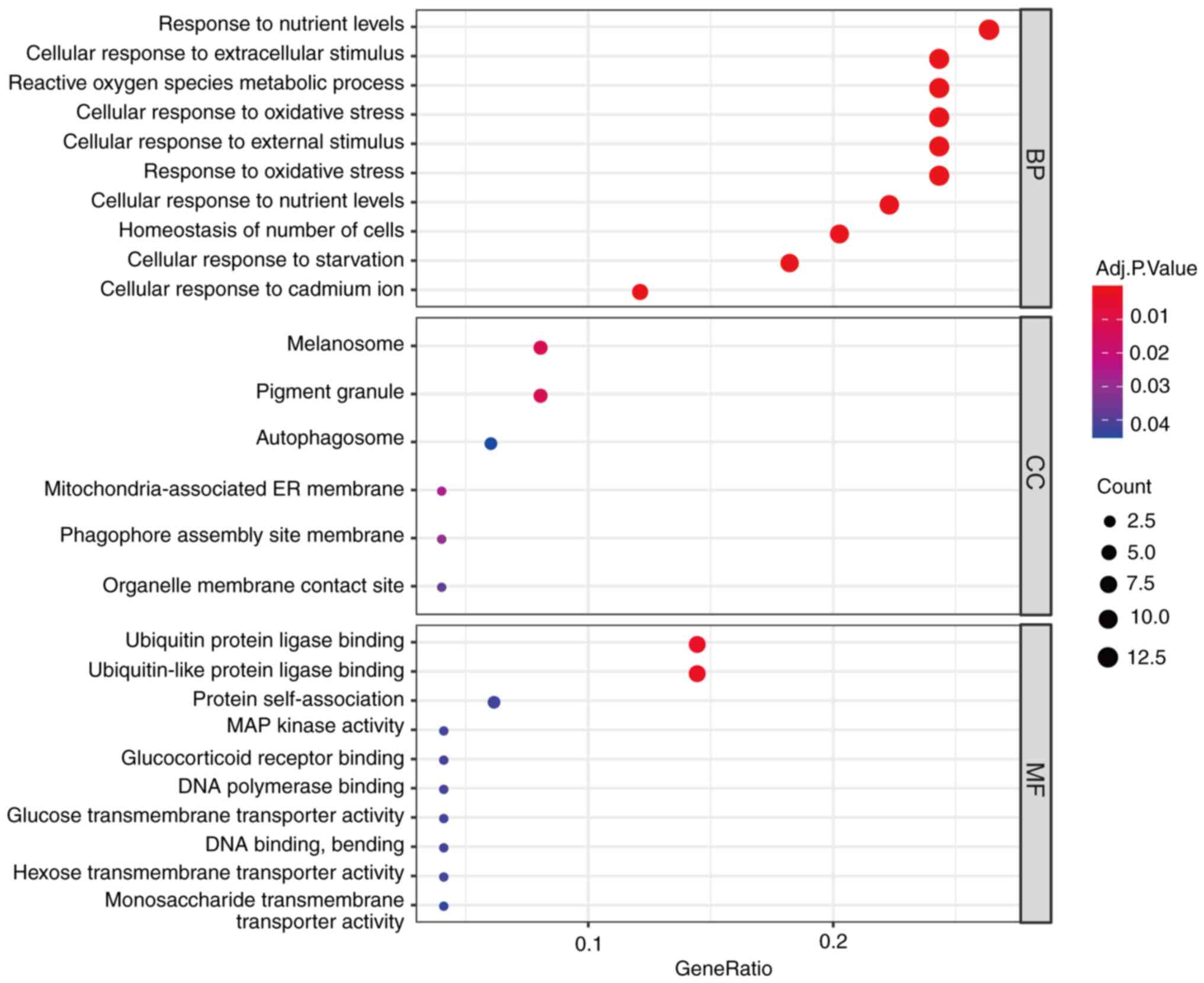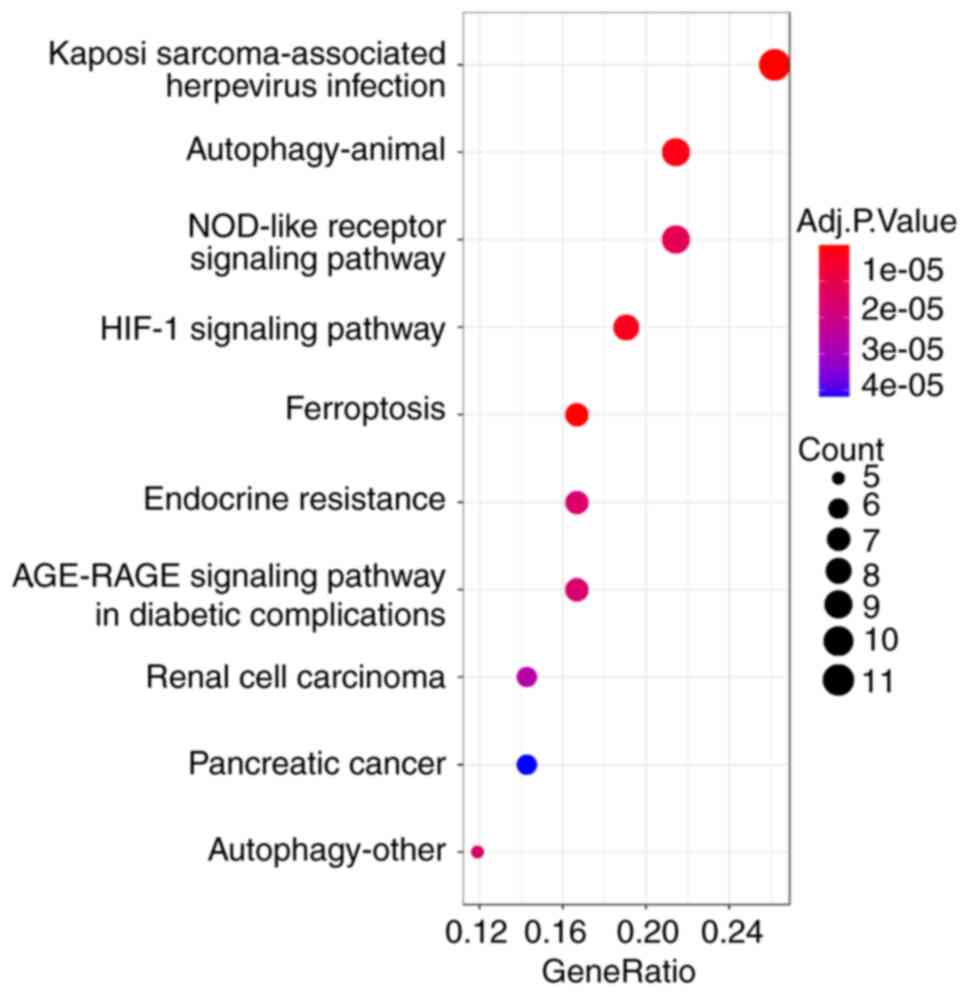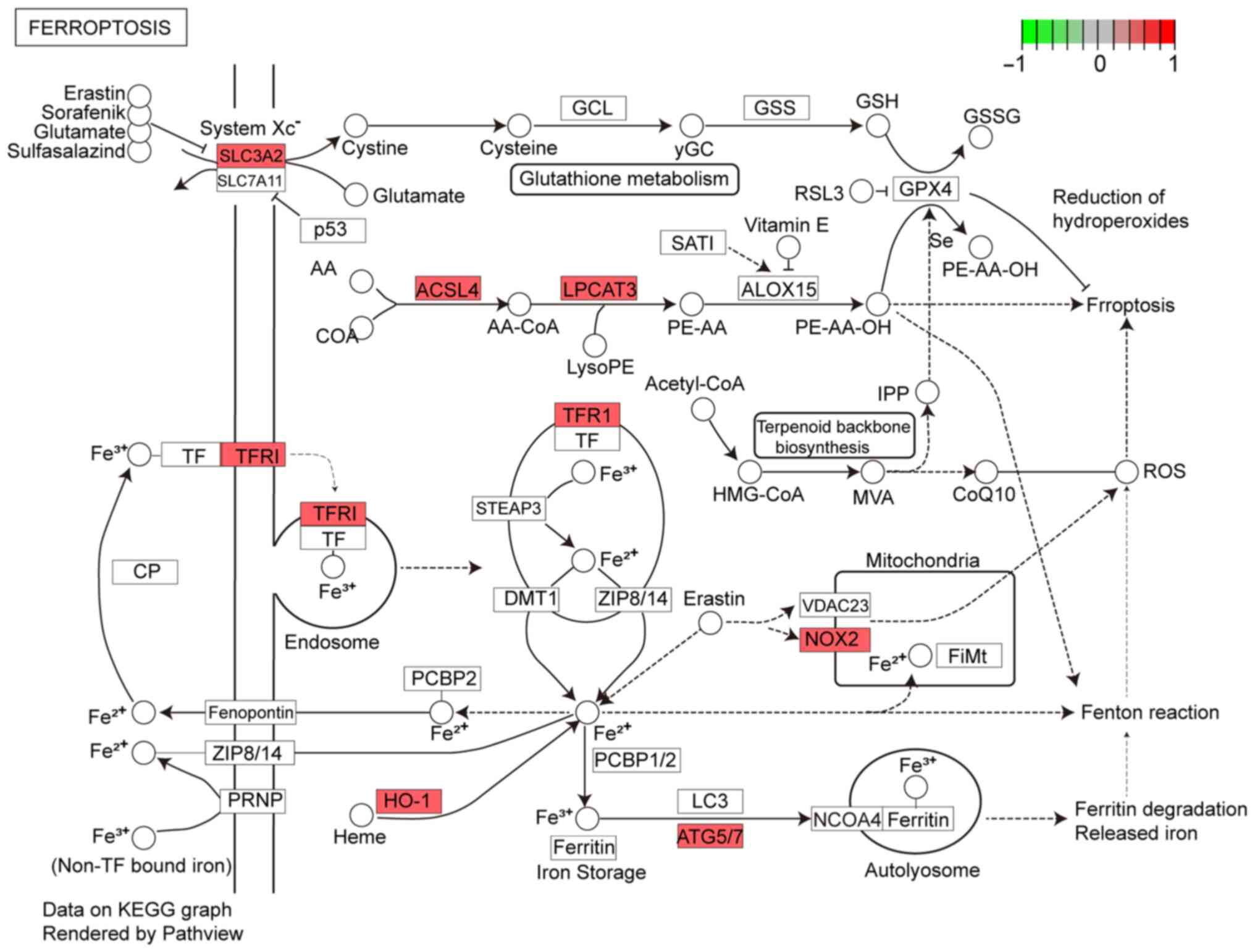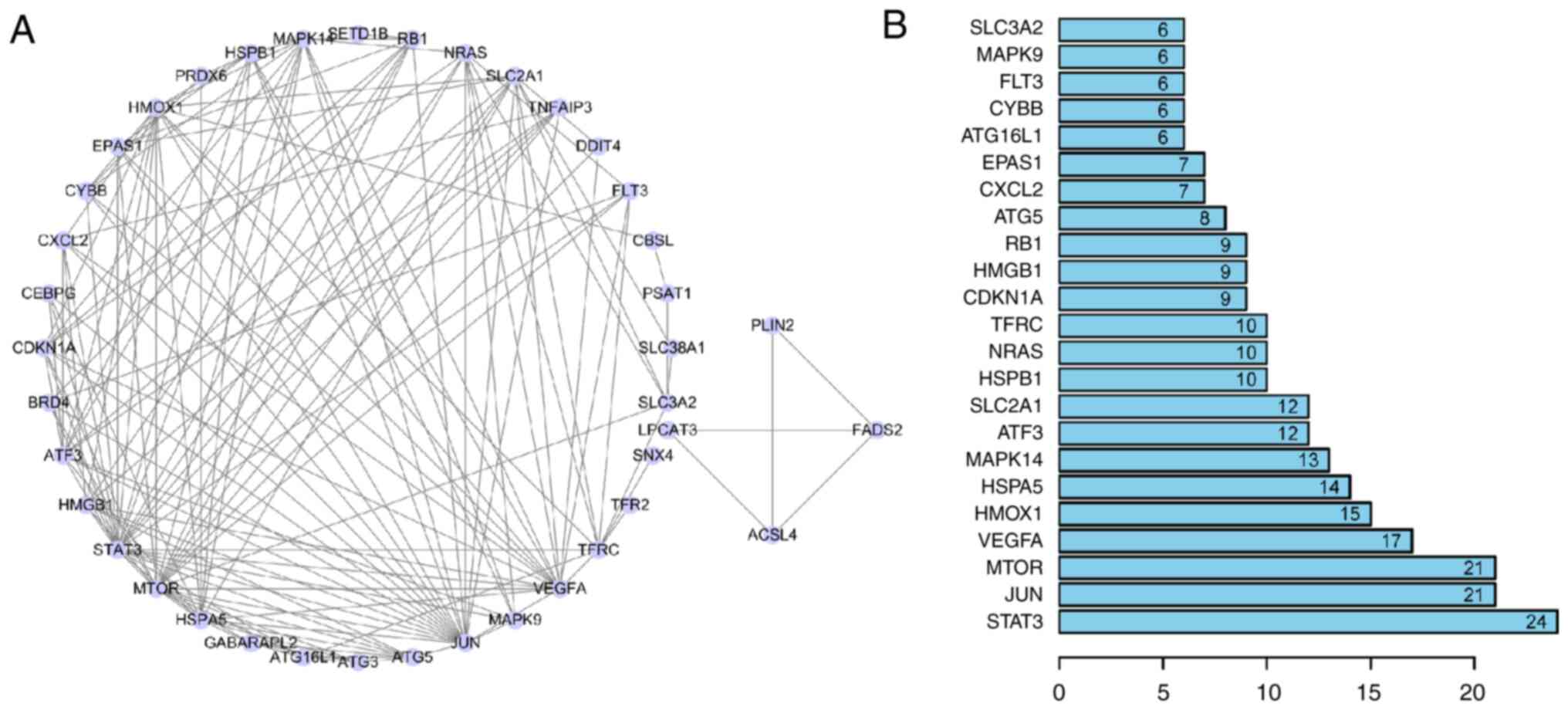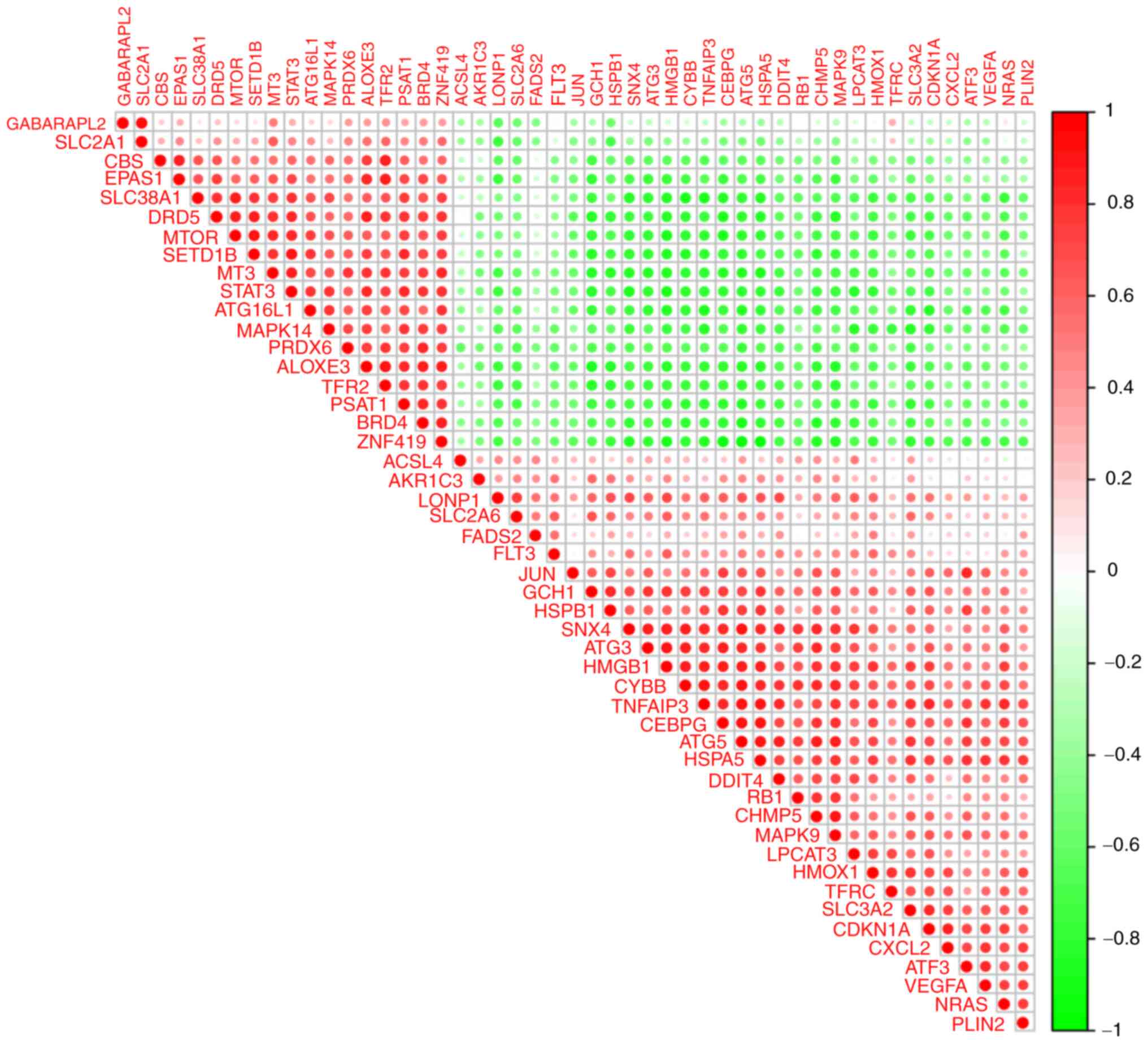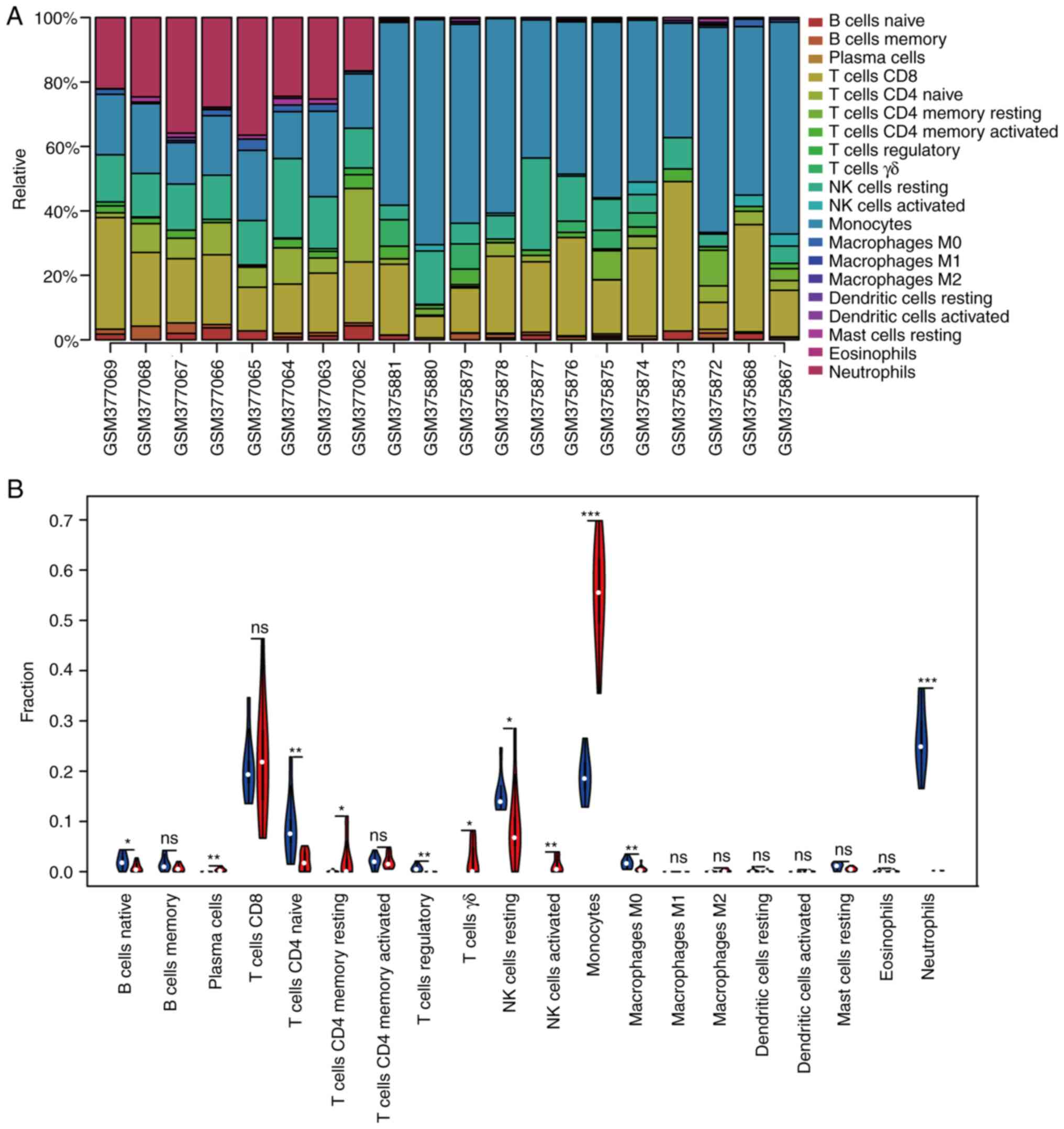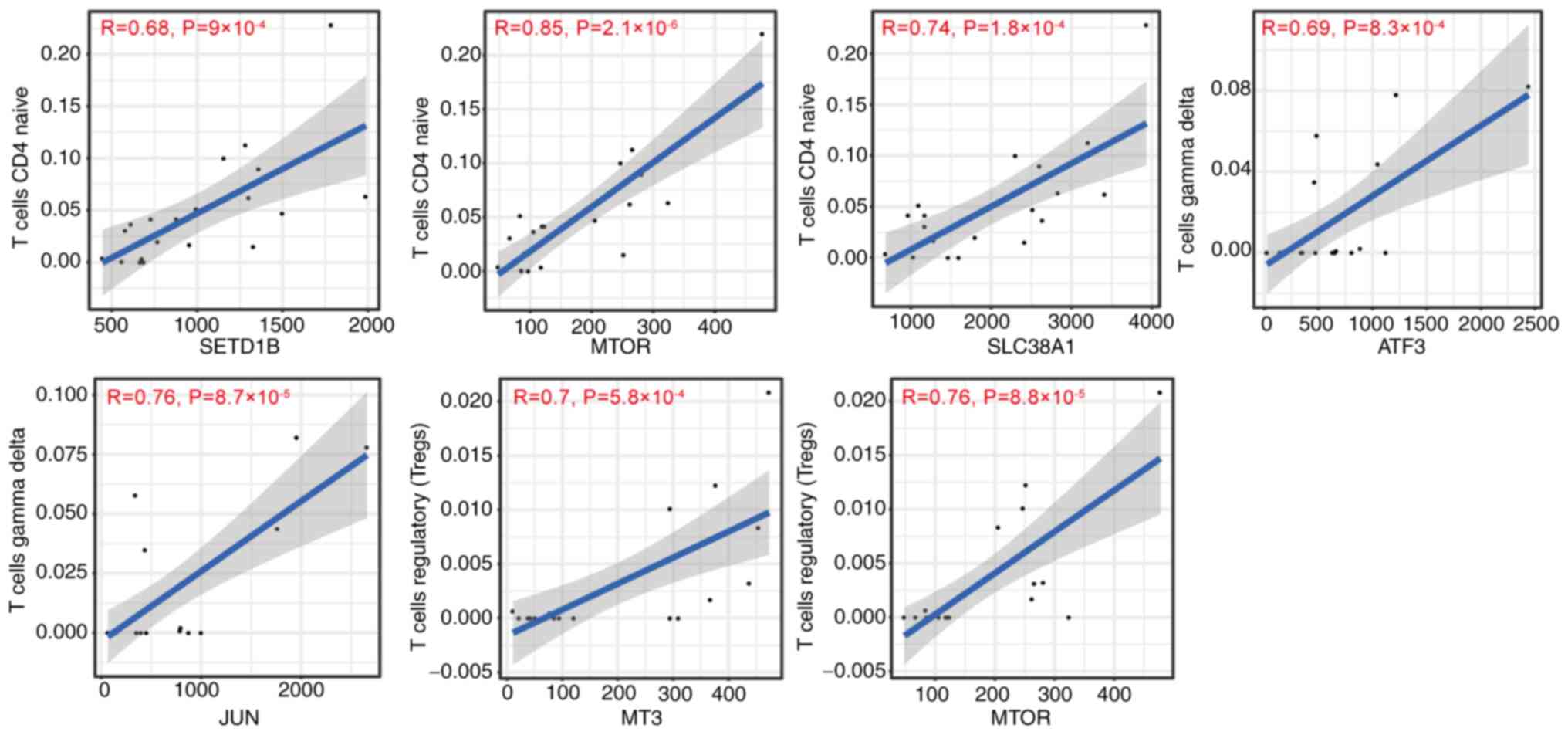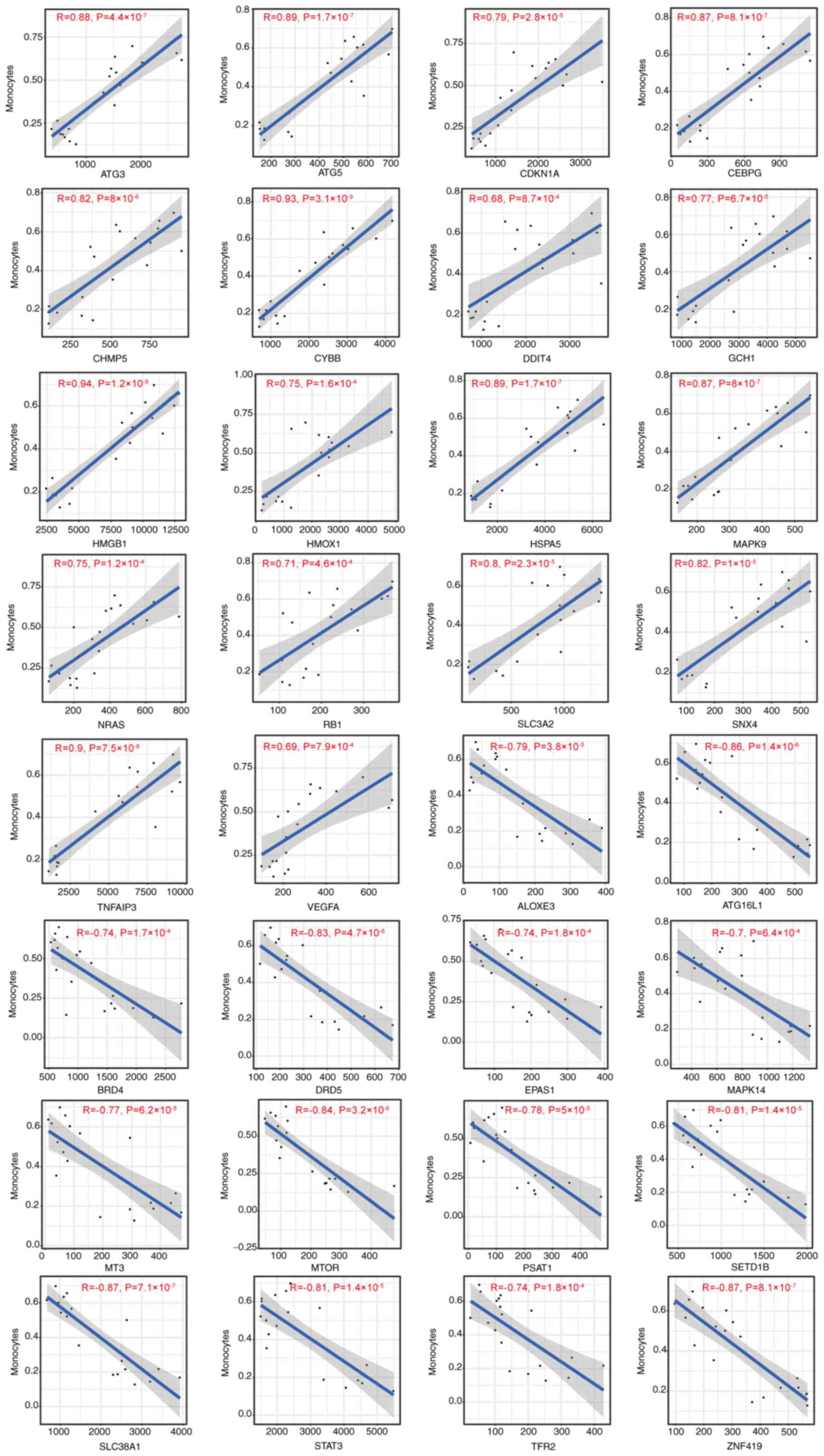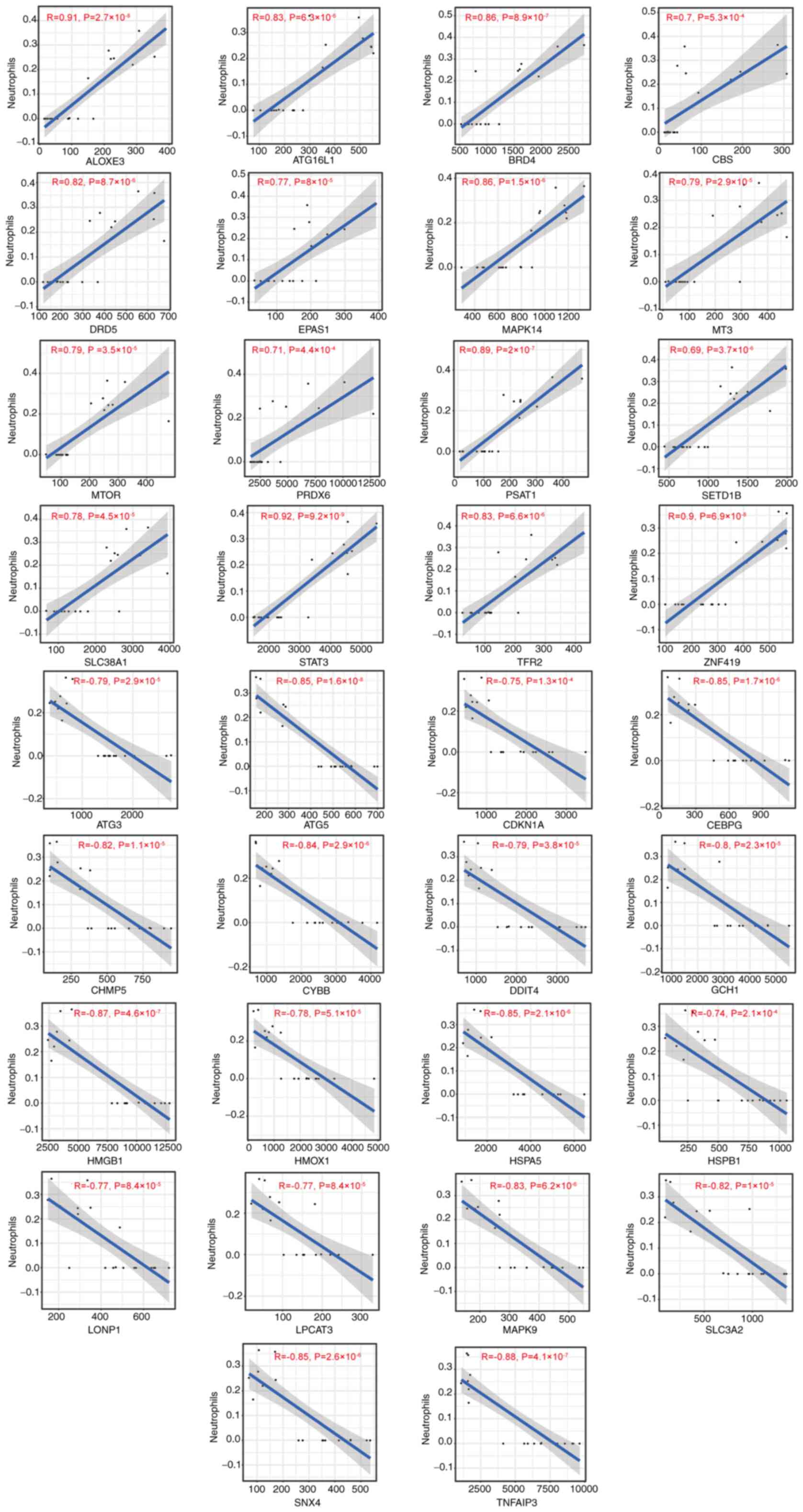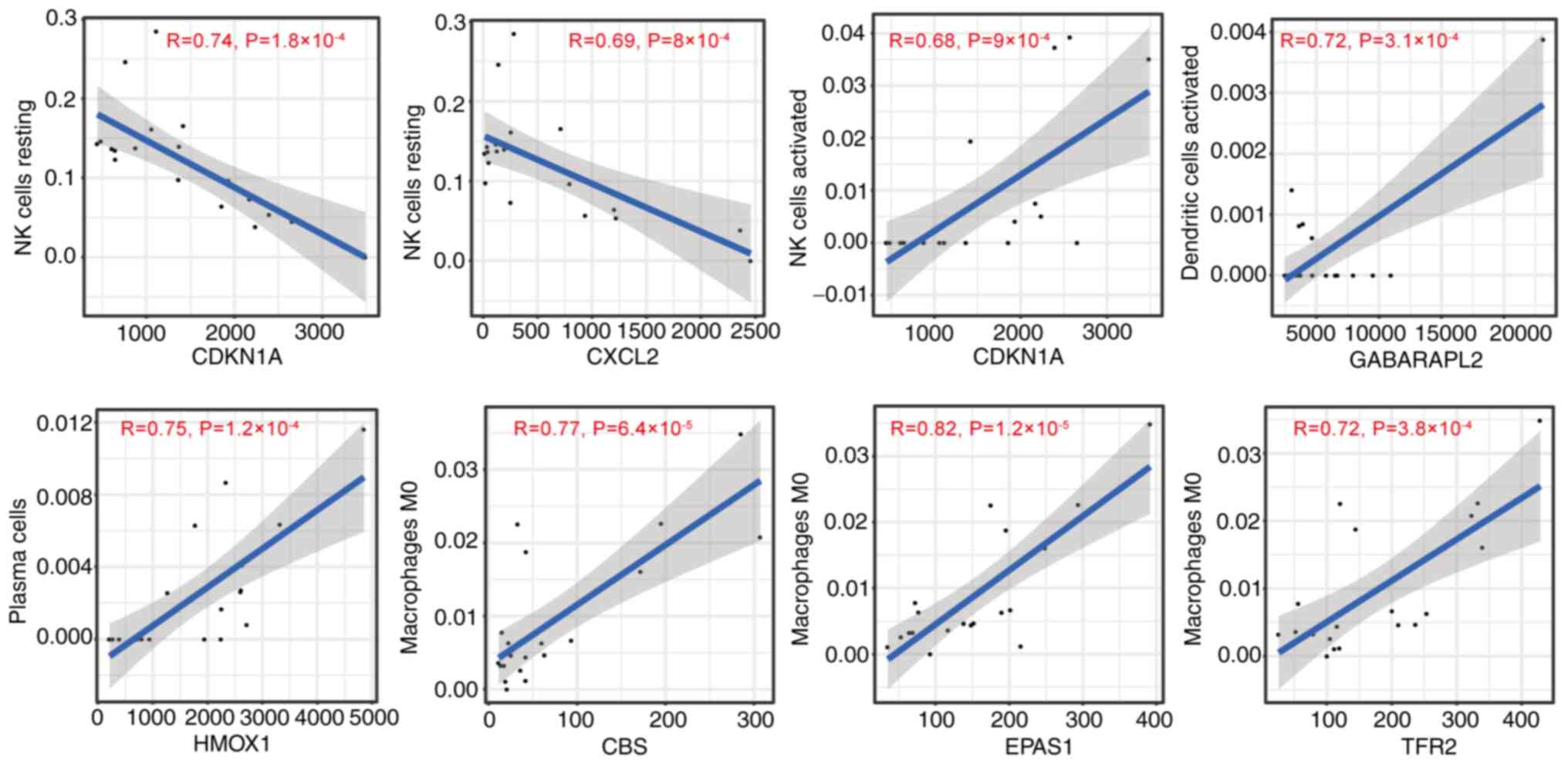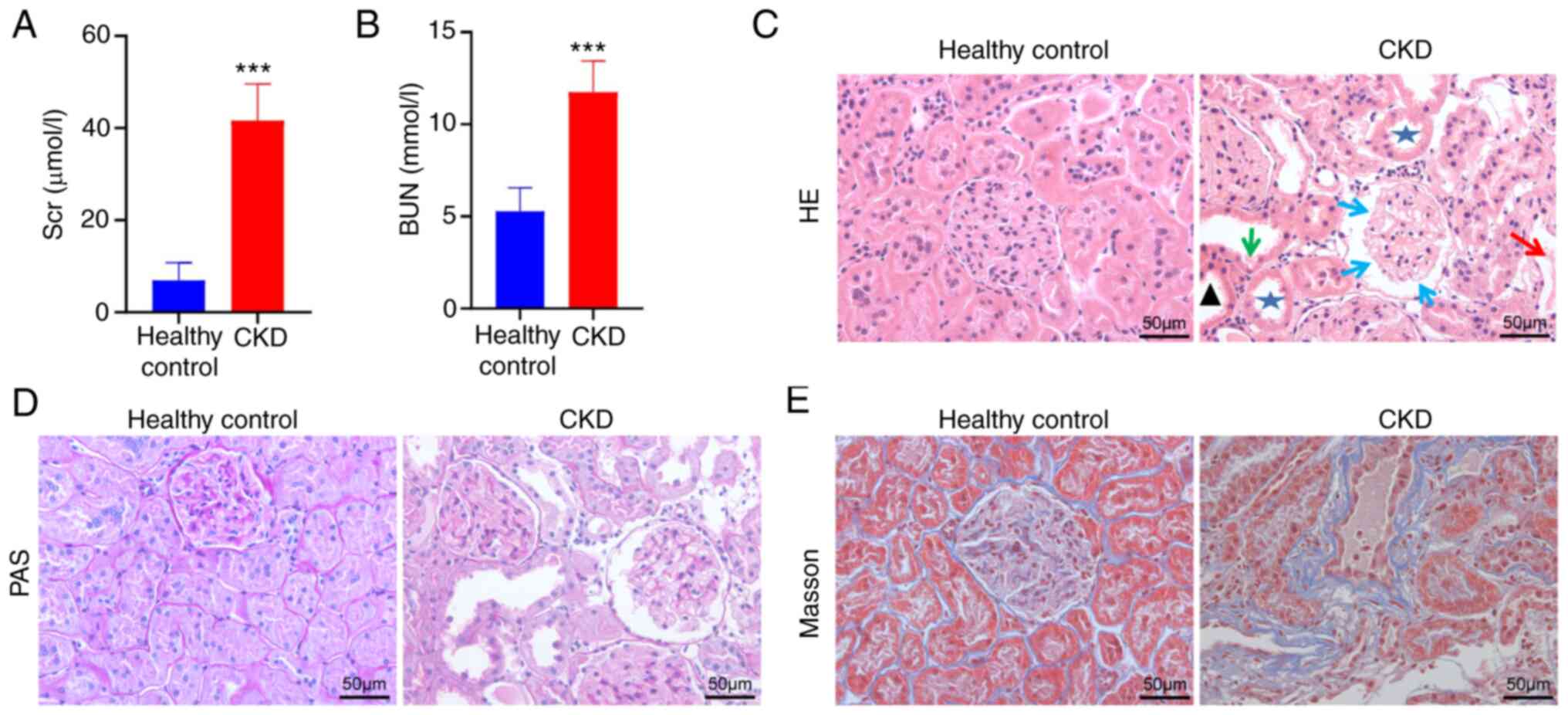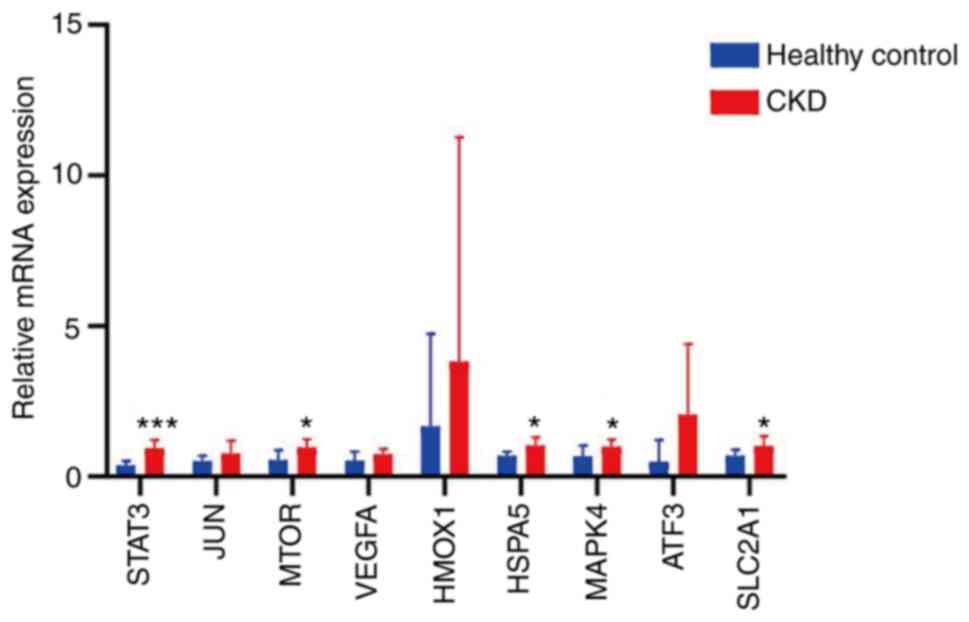|
1
|
Foreman K, Marquez N, Dolgert A, Fukutaki
K, Fullman N, McGaughey M, Pletcher MA, Smith AE, Tang K, Yuan CW,
et al: Forecasting life expectancy, years of life lost, and
all-cause and cause-specific mortality for 250 causes of death:
Reference and alternative scenarios for 2016-40 for 195 countries
and territories. Lancet. 392:2052–2090. 2018.PubMed/NCBI View Article : Google Scholar
|
|
2
|
Zhao H, Ma SX, Shang YQ, Zhang HQ and Su
W: microRNAs in chronic kidney disease. Clin Chim Acta. 491:59–65.
2019.PubMed/NCBI View Article : Google Scholar
|
|
3
|
Saritas T and Floege J: Cardiovascular
disease in patients with chronic kidney disease. Herz. 45:122–128.
2020.PubMed/NCBI View Article : Google Scholar
|
|
4
|
Sun Y, Chen P, Zhai B, Zhang M, Xiang Y,
Fang J, Xu S, Gao Y, Chen X, Sui X and Li G: The emerging role of
ferroptosis in inflammation. Biomed Pharmacother.
127(110108)2020.PubMed/NCBI View Article : Google Scholar
|
|
5
|
Battaglia A, Chirillo R, Aversa I, Sacco
A, Costanzo F and Biamonte F: Ferroptosis and cancer: Mitochondria
meet the ‘Iron Maiden’ cell death. Cells. 9(1505)2020.PubMed/NCBI View Article : Google Scholar
|
|
6
|
Zhang X and Li X: Abnormal iron and lipid
metabolism mediated ferroptosis in kidney diseases and its
therapeutic potential. Metabolites. 12(58)2022.PubMed/NCBI View Article : Google Scholar
|
|
7
|
Zhou L, Xue X, Hou Q and Dai C: Targeting
ferroptosis attenuates interstitial inflammation and kidney
fibrosis. Kidney Dis (Basel). 8:57–71. 2022.PubMed/NCBI View Article : Google Scholar
|
|
8
|
Moore JH: Bioinformatics. J Cell Physiol.
213:365–369. 2007.PubMed/NCBI View Article : Google Scholar
|
|
9
|
Chen JY, Youn E and Mooney SD: Connecting
protein interaction data, mutations, and disease using
bioinformatics. Methods Mol Biol. 541:449–461. 2009.PubMed/NCBI View Article : Google Scholar
|
|
10
|
Wang D, Xie N, Gao W, Kang R and Tang D:
The ferroptosis inducer erastin promotes proliferation and
differentiation in human peripheral blood mononuclear cells.
Biochem Biophys Res Commun. 503:1689–1695. 2018.PubMed/NCBI View Article : Google Scholar
|
|
11
|
Altintas M, DiBartolo S, Tadros L, Samelko
B and Wasse H: Metabolic changes in peripheral blood mononuclear
cells isolated from patients with end stage renal disease. Front
Endocrinol (Lausanne). 12(629239)2021.PubMed/NCBI View Article : Google Scholar
|
|
12
|
Hartman ML, Shirihai OS, Holbrook M, Xu G,
Kocherla M, Shah A, Fetterman JL, Kluge MA, Frame AA, Hamburg M and
Vita JA: Relation of mitochondrial oxygen consumption in peripheral
blood mononuclear cells to vascular function in type 2 diabetes
mellitus. Vasc Med. 19:67–74. 2014.PubMed/NCBI View Article : Google Scholar
|
|
13
|
Calton EK, Keane KN, Raizel R, Rowlands J,
Soares MJ and Newsholme P: Winter to summer change in vitamin D
status reduces systemic inflammation and bioenergetic activity of
human peripheral blood mononuclear cells. Redox Biol. 12:814–820.
2017.PubMed/NCBI View Article : Google Scholar
|
|
14
|
Tomas C, Brown A, Strassheim V, Elson JL,
Newton J and Manning P: Cellular bioenergetics is impaired in
patients with chronic fatigue syndrome. PLoS one.
12(e0186802)2017.PubMed/NCBI View Article : Google Scholar
|
|
15
|
Gangcuangco L, Mitchell BI, Siriwardhana
C, Kohorn LB, Chew GM, Bowler S, Kallianpur KJ, Chow DC, Ndhlovu
LC, Gerschenson M and Shikuma CM: Mitochondrial oxidative
phosphorylation in peripheral blood mononuclear cells is decreased
in chronic HIV and correlates with immune dysregulation. PLoS One.
15(e0231761)2020.PubMed/NCBI View Article : Google Scholar
|
|
16
|
Gentleman RC, Carey VJ, Bates DM, Bolstad
B, Dettling M, Dudoit S, Ellis B, Gautier L, Ge Y, Gentry J, et al:
Bioconductor: Open software development for computational biology
and bioinformatics. Genome Biol. 5(R80)2004.PubMed/NCBI View Article : Google Scholar
|
|
17
|
Huber W, Carey VJ, Gentleman R, Anders S,
Carlson M, Carvalho BS, Bravo HC, Davis S, Gatto L, Girke T, et al:
Orchestrating high-throughput genomic analysis with Bioconductor.
Nat Methods. 12:115–121. 2015.PubMed/NCBI View Article : Google Scholar
|
|
18
|
Preisendorfer RW and Mobley CD: Principal
component analysis in meteorology and oceanography. Journal
1988.
|
|
19
|
Ito K and Murphy D: Application of ggplot2
to pharmacometric graphics. CPT Pharmacometrics Syst Pharmacol.
2(e79)2013.PubMed/NCBI View Article : Google Scholar
|
|
20
|
Zhou N and Bao J: FerrDb: A manually
curated resource for regulators and markers of ferroptosis and
ferroptosis-disease associations. Database (Oxford).
1(baaa021)2020.PubMed/NCBI View Article : Google Scholar
|
|
21
|
Jia A, Xu L and Wang Y: Venn diagrams in
bioinformatics. Brief Bioinform. 22(bbab108)2021.PubMed/NCBI View Article : Google Scholar
|
|
22
|
Wang JH, Zhao LF, Lin P, Su XR, Chen SJ,
Huang LQ, Wang HF, Zhang H, Hu ZF, Yao KT and Huang ZX: GenCLiP
2.0: A web server for functional clustering of genes and
construction of molecular networks based on free terms.
Bioinformatics. 30:2534–2536. 2014.PubMed/NCBI View Article : Google Scholar
|
|
23
|
Du J, Yuan Z, Ma Z, Song J, Xie X and Chen
Y: KEGG-PATH: Kyoto encyclopedia of genes and genomes-based pathway
analysis using a path analysis model. Mol Biosyst. 10:2441–2447.
2014.PubMed/NCBI View Article : Google Scholar
|
|
24
|
Newman AM, Liu CL, Green MR, Gentles AJ,
Feng W, Xu Y, Hoang CD, Diehn M and Alizadeh AA: Robust enumeration
of cell subsets from tissue expression profiles. Nat Methods.
12:453–457. 2015.PubMed/NCBI View Article : Google Scholar
|
|
25
|
Smoot ME, Ono K, Ruscheinski J, Wang PL
and Ideker T: Cytoscape 2.8: New features for data integration and
network visualization. Bioinformatics. 27:431–432. 2011.PubMed/NCBI View Article : Google Scholar
|
|
26
|
Sandberg K and Umans JG: Recommendations
concerning the new U.S. National institutes of health initiative to
balance the sex of cells and animals in preclinical research. FASEB
J. 29:1646–1652. 2015.PubMed/NCBI View Article : Google Scholar
|
|
27
|
Livak KJ and Schmittgen TD: Analysis of
relative gene expression data using real-time quantitative PCR and
the 2(-Delta Delta C(T)) method. Methods. 25:402–408.
2001.PubMed/NCBI View Article : Google Scholar
|
|
28
|
Viechtbauer W: Conducting meta-analyses in
R with the metafor package. J Statistical Software. 36:1–48.
2010.
|
|
29
|
Masseroli M, Mons B, Bongcam-Rudloff E,
Ceri S, Kel A, Rechenmann F, Lisacek F and Romano P: Integrated
bio-search: Challenges and trends for the integration, search and
comprehensive processing of biological information. BMC
Bioinformatics. 15 (Suppl 1)(S2)2014.PubMed/NCBI View Article : Google Scholar
|
|
30
|
van Raaij S, van Swelm R, Bouman K,
Cliteur M, van den Heuvel MC, Pertijs J, Patel D, Bass P, van Goor
H, Unwin R, et al: Tubular iron deposition and iron handling
proteins in human healthy kidney and chronic kidney disease. Sci
Rep. 8(9353)2018.PubMed/NCBI View Article : Google Scholar
|
|
31
|
Liu Y: Epithelial to mesenchymal
transition in renal fibrogenesis: Pathologic significance,
molecular mechanism, and therapeutic intervention. J Am Soc
Nephrol. 15:1–12. 2004.PubMed/NCBI View Article : Google Scholar
|
|
32
|
Kalluri R and Neilson EG:
Epithelial-mesenchymal transition and its implications for
fibrosis. J Clin Invest. 112:1776–1784. 2003.PubMed/NCBI View Article : Google Scholar
|
|
33
|
Chevalier RL: Pathogenesis of renal injury
in obstructive uropathy. Curr Opin Pediatr. 18:153–160.
2006.PubMed/NCBI View Article : Google Scholar
|
|
34
|
Zhao H, Han Y, Jiang N, Li C, Yang M, Xiao
Y, Wei L, Xiong X, Yang J, Tang C, et al: Effects of HIF-1α on
renal fibrosis in cisplatin-induced chronic kidney disease. Clin
Sci (Lond). 135:1273–1288. 2021.PubMed/NCBI View Article : Google Scholar
|
|
35
|
Hillmer EJ, Zhang H, Li HS and Watowich
SS: STAT3 signaling in immunity. Cytokine Growth Factor Rev.
31:1–15. 2016.PubMed/NCBI View Article : Google Scholar
|
|
36
|
Zhou B, Liu J, Kang R, Klionsky DJ,
Kroemer G and Tang D: Ferroptosis is a type of autophagy-dependent
cell death. Semin Cancer Biol. 66:89–100. 2020.PubMed/NCBI View Article : Google Scholar
|
|
37
|
Hirota Y, Yamashita S, Kurihara Y, Jin X,
Aihara M, Saigusa T, Kang D and Kanki T: Mitophagy is primarily due
to alternative autophagy and requires the MAPK1 and MAPK14
signaling pathways. Autophagy. 11:332–343. 2015.PubMed/NCBI View Article : Google Scholar
|
|
38
|
Gomer C, Ferrario A, Rucker N, Wong S and
Lee AS: Glucose regulated protein induction and cellular resistance
to oxidative stress mediated by porphyrin photosensitization.
Cancer Res. 51:6574–6579. 1991.PubMed/NCBI
|
|
39
|
Saxton RA and Sabatini DM: MTOR signaling
in growth, metabolism, and disease. Cell. 168:960–976.
2017.PubMed/NCBI View Article : Google Scholar
|
|
40
|
Waln O and Jankovic J: Paroxysmal movement
disorders. Neurol Clin. 33:137–152. 2015.PubMed/NCBI View Article : Google Scholar
|
|
41
|
Bienaimé F, Muorah M, Yammine L, Burtin M,
Nguyen C, Baron W, Garbay S, Viau A, Broueilh M, Blanc T, et al:
Stat3 controls tubulointerstitial communication during CKD. J Am
Soc Nephrol. 27:3690–3705. 2016.PubMed/NCBI View Article : Google Scholar
|
|
42
|
Wang J, Chai L, Lu Y, Lu H, Liu Y and
Zhang Y: Attenuation of mTOR signaling is the major response
element in the rescue pathway of chronic kidney disease in rats.
Neuroimmunomodulation. 27:9–18. 2020.PubMed/NCBI View Article : Google Scholar
|
|
43
|
Lindenmeyer MT, Rastaldi MP, Ikehata M,
Neusser MA, Kretzler M, Cohen CD and Schlöndorff D: Proteinuria and
hyperglycemia induce endoplasmic reticulum stress. J Am Soc
Nephrol. 19:2225–2236. 2008.PubMed/NCBI View Article : Google Scholar
|
|
44
|
Bhreathnach U, Griffin B, Brennan E, Ewart
L, Higgins D and Murphy M: Profibrotic IHG-1 complexes with renal
disease associated HSPA5 and TRAP1 in mitochondria. Biochim Biophys
Acta Mol Basis Dis. 1863:896–906. 2017.PubMed/NCBI View Article : Google Scholar
|
|
45
|
Liu J, Yu X, Yu H, Liu B, Zhang Z, Kong C
and Li Z: Knockdown of MAPK14 inhibits the proliferation and
migration of clear cell renal cell carcinoma by downregulating the
expression of CDC25B. Cancer Med. 9:1183–1195. 2020.PubMed/NCBI View Article : Google Scholar
|
|
46
|
Willemsen MA, Vissers LE, Verbeek MM, van
Bon BW, Geuer S, Gilissen C, Klepper J, Kwint MP, Leen WG, Pennings
M, et al: Upstream SLC2A1 translation initiation causes GLUT1
deficiency syndrome. Eur J Hum Genet. 25:771–774. 2017.PubMed/NCBI View Article : Google Scholar
|
|
47
|
Yang L, Guo J, Yu N, Liu Y, Song H, Niu J
and Gu Y: Tocilizumab mimotope alleviates kidney injury and
fibrosis by inhibiting IL-6 signaling and ferroptosis in UUO model.
Life Sci. 261(118487)2020.PubMed/NCBI View Article : Google Scholar
|
|
48
|
Wang J, Wang Y, Liu Y, Cai X, Huang X, Fu
W, Wang L, Qiu L, Li J and Sun L: Ferroptosis, a new target for
treatment of renal injury and fibrosis in a 5/6 nephrectomy-induced
CKD rat model. Cell Death Discov. 8(127)2022.PubMed/NCBI View Article : Google Scholar
|
|
49
|
Ikeda Y, Ozono I, Tajima S, Imao M,
Horinouchi Y, Izawa-Ishizawa Y, Kihira Y, Miyamoto L, Ishizawa K,
Tsuchiya K and Tamaki T: Iron chelation by deferoxamine prevents
renal interstitial fibrosis in mice with unilateral ureteral
obstruction. PLoS One. 9(e89355)2014.PubMed/NCBI View Article : Google Scholar
|
|
50
|
Zhang M and Huang B: The
multi-differentiation potential of peripheral blood mononuclear
cells. Stem Cell Res Ther. 3(48)2012.PubMed/NCBI View Article : Google Scholar
|
|
51
|
Tang P, Zhang Y, Chan M, Lam WWY, Chung
JYF, Kang W, To KF, Lan HY and Tang PMK: The emerging role of
innate immunity in chronic kidney diseases. Int J Mol Sci.
21(4018)2020.PubMed/NCBI View Article : Google Scholar
|
|
52
|
Sato H, Fujiwara K, Sagara J and Bannai S:
Induction of cystine transport activity in mouse peritoneal
macrophages by bacterial lipopolysaccharide. Biochem J.
310:547–551. 1995.PubMed/NCBI View Article : Google Scholar
|
|
53
|
Schnurr K, Borchert A and Kuhn H: Inverse
regulation of lipid-peroxidizing and hydroperoxyl lipid-reducing
enzymes by interleukins 4 and 13. FASEB J. 13:143–154.
1999.PubMed/NCBI View Article : Google Scholar
|















